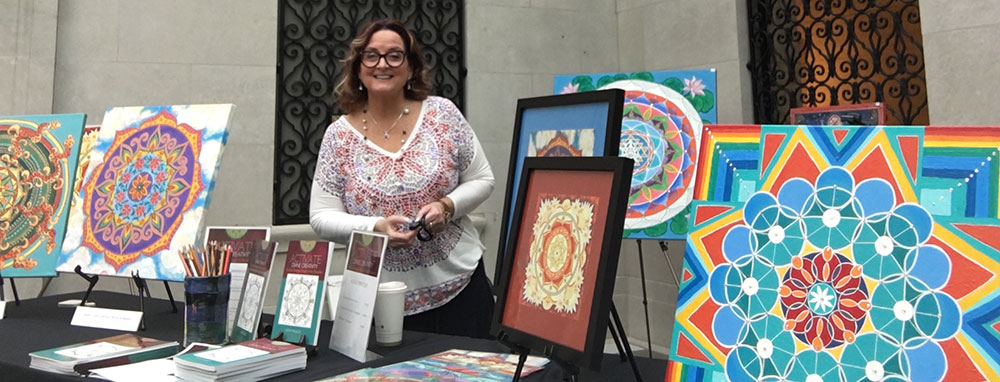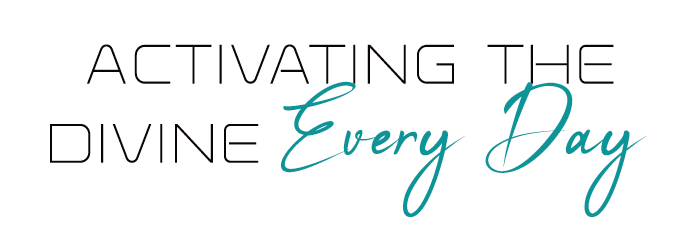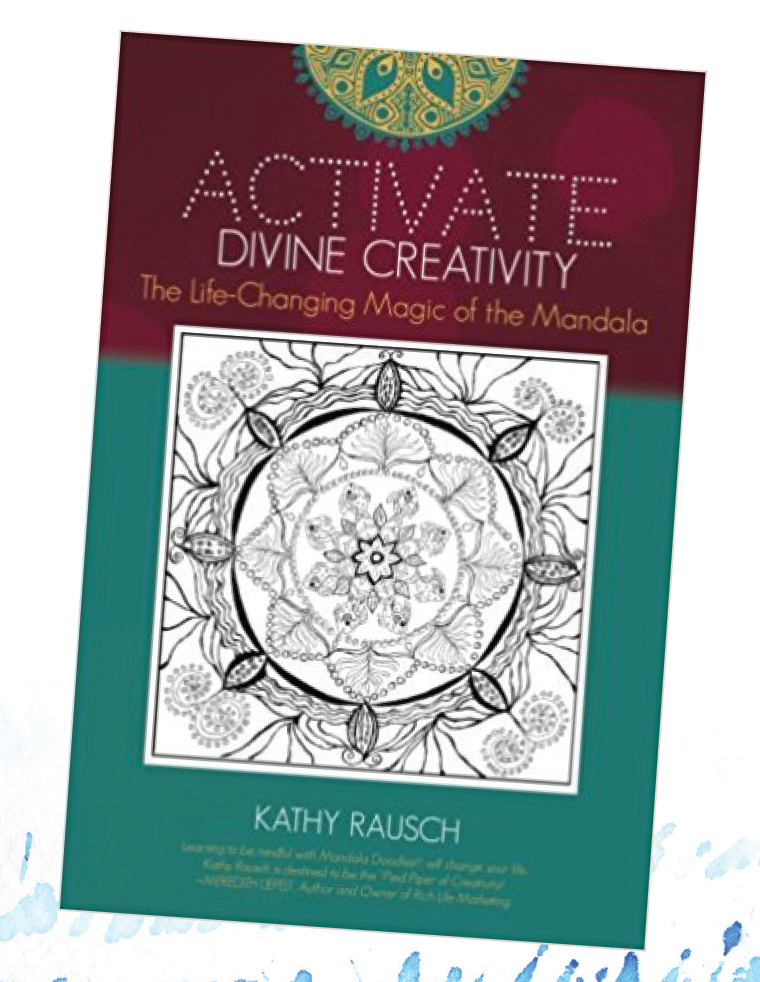 In 2018, I was interviewed for Science of Mind Magazine. This is the full article, which was printed in July 2018.
In 2018, I was interviewed for Science of Mind Magazine. This is the full article, which was printed in July 2018.
The Divine Designs of Kathy Rausch
by Sara Awad
The mandala is an archetypal image whose occurrence is attested throughout the ages. It signifies the wholeness of the self.” — CARL G. JUNG
“Do you remember how fun it was to pick a dandelion and blow the wispy seeds into the blue sky?” asks Kathy Rausch. “That is what it’s like to create a mandala. It’s simple and it’s pure joy.”
There was a time in Rausch’s life when she couldn’t remember how joy felt. Like many adult survivors of childhood abuse, she struggled with depression and alcohol addiction. “I didn’t believe I deserved to live,” she reflects. It was there, in the shadows of what she calls her “dark night of the soul,” that she made a discovery that would forever transform not only her life but the lives of countless others by giving them a way to reconnect with the spark of divine creativity that lives inside all of us.
What Rausch discovered was an ancient art form that has been used for millennia in cultures worldwide as a tool for spiritual growth, creativity, and physical and emotional healing. The mandala, whose name is derived from the Sanskrit word mandra, meaning “circle,” is considered in Buddhism and Hinduism to be a circular representation of the soul’s journey in the world.

“I have always loved to create art in some form or another,” Rausch says. “It was at a very low point in my life, when I couldn’t see past my anger, sadness and depression, that I was introduced to the mandala. A couple of angels dropped into my life and took me under their wings. They were women I didn’t know, but they surrounded me with love and support. I barely felt it at the time. I didn’t think that I deserved to be loved.”
The women, whom Rausch first met at an Alcoholics Anonymous meeting, invited her to an art show where she was surrounded by hand-painted mandalas created by women who had no artistic experience. “I gazed around and was struck by the colors, symbols and beauty of each one,” she recalls. “Each woman had written a statement about what the mandala meant to her. As I read them, curiosity began to take the place of grief for the first time in years.”
Shortly afterward, Rausch began creating mandalas of her own under the guidance of her mentor Merry Norris. “My first mandala represented my family. I laughed and cried as I went through the process of creating something that supported my feelings for my family: good, bad and ugly. It was the beginning of my healing process.”

Mandalas, traditionally created during meditation, serve as a metaphor for the soul’s discovery while contemplating the meaning of life. Rausch, like the famous psychologist Carl Jung, believes that the mandala is a window into the soul – an external portrayal of the artist’s inner life.

“Creating a mandala invokes symbolic memories that have been stored in your psyche and can help heal, motivate and energize your body, mind and spirit,” she explains. “As you begin using geometric patterns, your divine creativity is activated, allowing those symbols to flow from your subconscious into conscious awareness.”
One explanation for the healing power of the mandala comes from its very design. Composed of sacred geometry — the same geometrical patterns found in all of creation, including human DNA — it is a circular matrix with a center point, a point from which all things are possible. From this sacred center comes forth unlimited potential.
“Opening up the Divine within is as powerful as moving a mountain with the faith the size of a mustard seed,” Rausch explains. “I moved a mountain of grief that stopped me from being the person I am meant to be. Whether it’s a mountain, a tiny little hill or a speed bump that you need to move, meditating while being creative will help you do that. The simple act of creating a mandala is exactly that.”

As Rausch began to express herself in bold colors and exquisite geometric patterns, she looked within and saw that it was a lack of self-love and trust in her own divine nature that was keeping her trapped in a cycle of depression and alcohol addiction. “I was just so afraid to be myself,” she reflects. “I was afraid to make mistakes. I didn’t trust myself at all.”
It was in learning to draw mandalas that Rausch began to realize her own divine perfection and rewrite the stories and beliefs that had controlled her life’s experience for so long.

“The nature of creation,” she says, “while following mathematical principles at all times, is not perfect. Yet, the breathtaking beauty of the foliage in a forest, the lovely aroma of dew on the morning grass and the awesomeness of a vast night sky are wondrous. We are constantly surrounded by divine perfection, and we know instinctively that we are one with it all. We know in our bones that we are imperfectly perfect.”
The mandala, she notes, is a mirror of life itself. “Your creation, like that of nature, will be flawed, but that is what makes it unique and fully authentic in its perfection.
“What always strikes me when I teach mandala workshops is that each person has the exact same paints, brushes, pencils and markers, but when completed, everyone’s mandala is completely unique and different.”
Rausch credits the experience of creating mandalas with bringing her to a place of inner oneness and completion, where she finally understands that she, like all of creation, is whole and perfect and that she is safe to let go and simply allow her own unique perfection to shine through. “I realized that I was not broken, as I had believed for so long that I was and that I did not need fixing. I am okay the way I am — and I am enough.”

“I believe that the world can be changed for the better, one mandala at a time,” Rausch says. “There is something inherently powerful and life-changing in them.”
Since she first began creating mandalas nearly 20 years ago, Rausch has written a book and created a companion coloring book, taught numerous seminars, and shown her artwork throughout the United States and around the world, all with the intention of helping others reignite the spark of creativity within and bring balance and joy into their lives in powerful, meaningful and lasting ways.
“God created each and every one of us as a divine human spark of love that is free to create a life full of love, harmony, relationships, abundance, fun and community. I believe we all have something unique to share with our communities, big or small. We all have our purpose to discover and express. And the biggest part of our adventure here on Earth is to figure that out.”

For more information on Rausch’s artwork and her books, “Activate Divine Creativity: The Life-Changing Magic of the Mandala” and “Mandala Doodles Coloring Book,” visit MagicOfTheMandala.com
